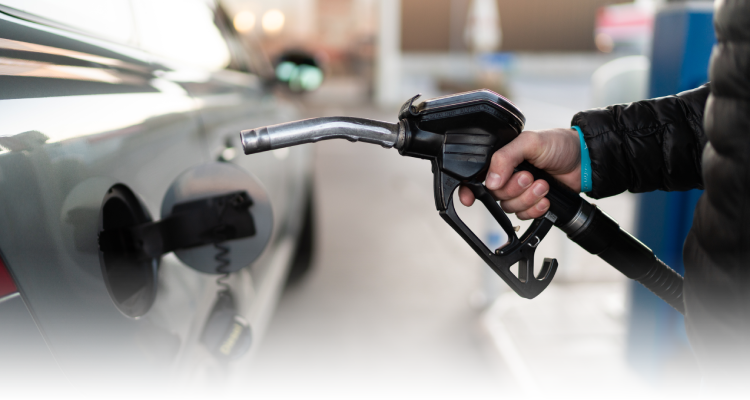
Thanks for reaching out!
Here’s some more information about Fluid Problems
Forensic Fluid Testing tells you the condition of the engine. Forensic Fuel Testing Kits reduce the cost of your investigation, lower the threshold limit for investigations, and increase your chance of preventing fraud.
Testing vehicle fluids (oil, fuel, transmission, and brake fluid) provides information to determine the condition of the vehicle at the time of the fire, flood, or theft. The condition of the fluids and the vehicle can help identify damage, failure, motive, and value.
We regularly get asked, Why Test?
The best answers are real investigations from our 30+ years of experience.
A man in North Carolina discovers his vehicle missing. He intends to file a stolen vehicle report and insurance claim on Monday morning. On the Sunday before, his vehicle is discovered. In North Carolina; near his home; burned. The police suspect the owner. The insurance company suspects the owner. The insurance investigator does a thorough investigation including a sample of the engine oil.
The oil analysis indicates massive wear and engine failure. This is an excellent motive for the owner to torch the car. Only, the investigator has in his notes that the oil was changed at a service station the previous week. The service station recorded the mileage at the time of service. The burned abandoned vehicle had 3000+ additional miles on it.
Further investigation and evidence proved the car had been stolen, used on a multi-state drug run, returned and torched to destroy the evidence. +1 for the Innocent Man, 0 for the Bad Guys. Facts make your case.
Testing the oil, fuel, transmission fluid, and brake fluid is quick and easy. Get this information you need for your thorough investigation. Get the facts.
Where to sample
Selecting the best sampling location really depends on the nature of the claim. If the claim is “sugar in the fuel tank”, you’ll want to get a sample from the *bottom* of the fuel tank (sugar sinks and doesn’t dissolve). If the claim is “gasoline in the diesel”, it doesn’t really matter where you collect the fuel, since gasoline and diesel are miscible.
If the claim is “water in the diesel”, a sample from the fuel tank is generally insufficient to establish a significant contamination problem. The presence of water in diesel fuel is so common that nearly all diesel vehicles are equipped with a fuel/water separator. If there’s water in the fuel tank, it should be separated from the diesel by the fuel system before it gets to the engine (if the fuel system is operating properly). In these cases, sample from the fuel rail is useful, because it represents what is actually being delivered to the engine. If the claim warrants it, collecting more than one fuel sample (from different locations on the vehicle) is great, because you can get a clearer picture regarding how the contamination has migrated through the fuel system.
Collecting a fuel sample from the fuel/water separator (or a fuel filter) is common, but if there is water and particulate matter present, that means only that the fuel/water separator (or filter) is doing its job. Alone, it does not establish that the contamination has affected the engine.
Diesel Exhaust Fluid (DEF) contamination is becoming more and more common (from the laboratory’s perspective). DEF is about 70% water, so like water, it would be found at the *bottom* of the fuel tank or in the fuel/water separator. If an excessive amount of water (or DEF) is present, where the capacity of the fuel/water separator is overwhelmed, it is possible to find water (or DEF) downstream (e.g., the fuel rail).
How to ship oil and fuels
US Department of Transportation Regulations state that samples 2 ounces or less of oil or gasoline must be shipped using an “overpack” mailer. The sample bottle must be placed in a mail piece with enough cushioning material surrounding it to absorb all potential leakage. The cushioning and primary receptacle should be packed within a securely sealed secondary container (mailer) that can then be placed in a box or shipping container. The samples can only be sent via ground shipping and cannot be sent through the air (overnight) or on a carrier that handles passengers. The Armstrong Forensic Laboratory Vehicle Fluid Sampling Kit complies with all DOT shipping requirements.
The Armstrong Forensic Laboratory Vehicle Fluid Sampling Kit complies with all DOT shipping requirements.
It is very important that samplers collect fuels and oils in the proper containers. Not all plastics are satisfactory for collection of petroleum products as the aromatic components quickly destroy or solubilize the plastics. The containers provided in the tests kits have been thoroughly tested to provide protection for your evidence. The one ounce plastic jars provide a satisfactory quantity for testing but must be over packed in the black plastics for shipping in accordance to the Code of Federal Regulations. Only one one-ounce plastic is necessary for a fuel or oil analysis. Two are included in a kit but that is only for your convenience, should you decide to send a second sample. Two ounces of fuel can be shipped in a kit – in overpacks with absorbant material. Shipping a fuel or an oil in the overpack, alone, is extremely dangerous and is not allowed by law.
Call today to get your sampling kit and shipping container
Report fraud and vehicle theft to your local law enforcement, as well as the National Insurance Crime Bureau at 1-800-TEL-NICB (1-800-835-6422).
Your call to NICB can be anonymous and you may be eligible for a reward.
